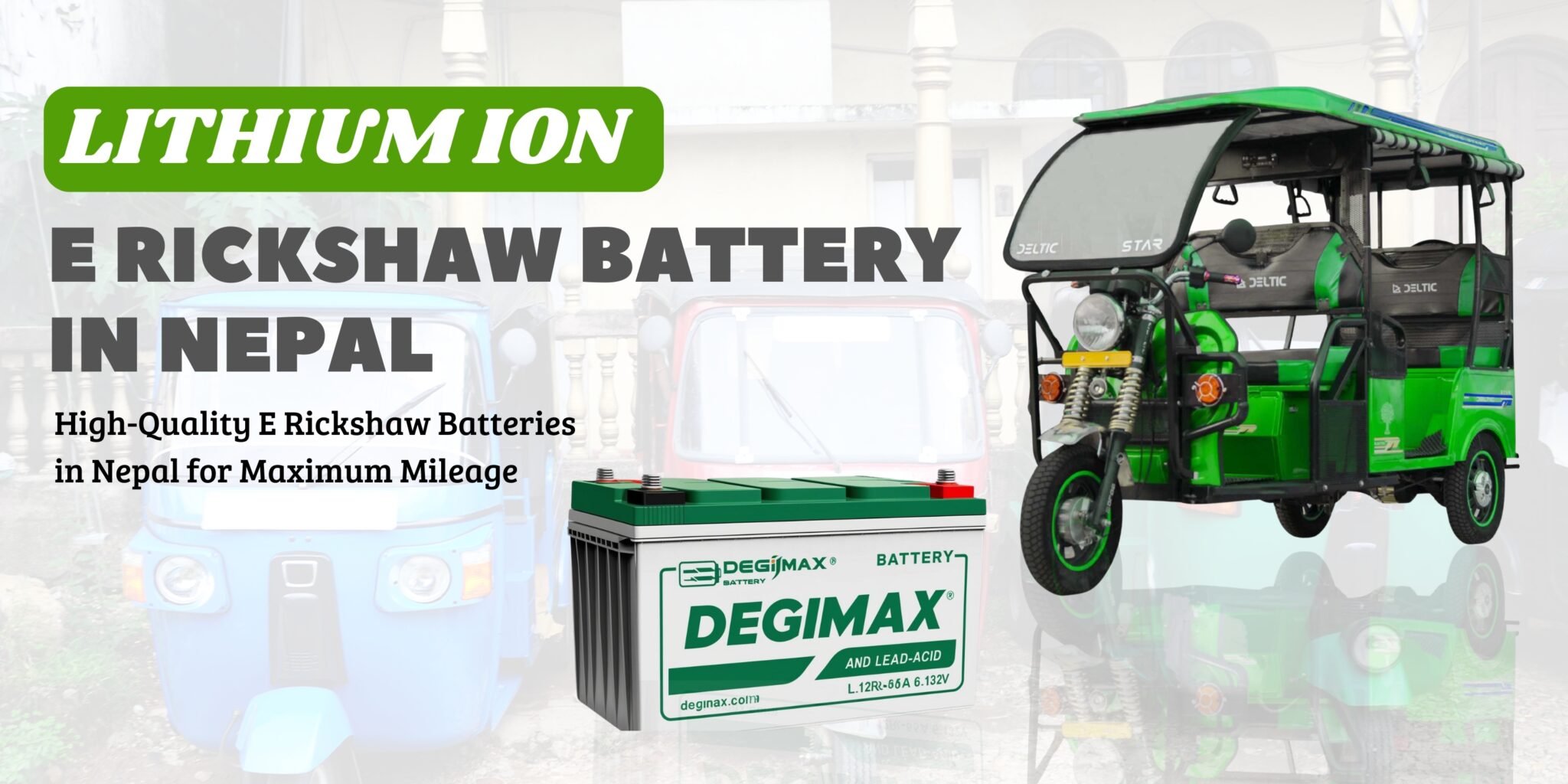E-rickshaws have become increasingly popular in Nepal since they provide environmental benefits, financial advantages, and operational efficiency for urban transport and rural areas. The battery is vital to electric rickshaws because it decides performance capabilities, operational duration, and expense. The Lithium Ion E Rickshaw Battery represents the most technologically improved and dependable option among all battery solutions. The innovative design combined with a lengthy operational period along with weight efficiency establishes this technology as the perfect energy solution for E-rickshaws. Finding a trustworthy Lithium Ion E rickshaw Battery Supplier in Nepal is important to ensure the long-term functionality and effectiveness of e-rickshaws.
1. Longer Lifespan and Durability
One of the biggest advantages of using a lithium-ion battery is its longer lifespan compared to traditional lead-acid batteries. While lead-acid batteries typically last around 1 to 2 years, lithium batteries for e-rickshaws can function efficiently for up to 5 years with proper maintenance.” This extended lifespan reduces frequent replacement costs, making it a cost-effective option for E-rickshaw operators. Additionally, lithium-ion batteries are built with durable materials that withstand frequent charging cycles. Their deep discharge capacity ensures consistent power delivery, enhancing overall vehicle efficiency.
2. Faster Charging Time
Time is money for E-rickshaw drivers, and downtime for charging can significantly impact earnings. One of the standout benefits of lithium-ion batteries is their faster charging capability. Unlike lead-acid batteries, which can take 8–10 hours to fully charge, lithium-ion batteries require only 3–4 hours for a full charge. This means E-rickshaw operators can complete multiple trips in a day with minimal downtime, increasing productivity and profitability.
3. Lightweight and High Energy Efficiency
A lithium-ion battery for e-rickshaw is significantly lighter than its lead-acid counterpart, which can weigh up to 60–70 kg. The lightweight nature of lithium-ion batteries enhances the overall efficiency of the E-rickshaw by reducing the vehicle’s weight and improving speed, battery life, and mileage.
Furthermore, lithium-ion batteries have a higher energy density, meaning they store more energy in a compact size. This ensures longer rides per charge, reducing the need for frequent recharges and improving daily operational efficiency.
4. Eco-Friendly and Low Maintenance
With increasing environmental concerns, Nepal is moving towards cleaner and more sustainable transportation options. Lithium-ion batteries are an eco-friendly alternative as they do not contain harmful heavy metals like lead or cadmium, which can be hazardous to the environment.
Additionally, lithium-ion batteries require minimal maintenance. Unlike lead-acid batteries, which need regular water topping and maintenance to prevent sulfation, lithium-ion batteries come with a sealed design, eliminating the need for frequent upkeep. This makes them a hassle-free and sustainable choice for E-rickshaw operators.
5. High Power Output and Consistent Performance
Performance is a key factor for any E-rickshaw driver. Lithium-ion batteries provide a higher power output and consistent voltage levels, ensuring a smooth and efficient ride. Traditional lead-acid batteries often experience voltage drops, leading to reduced speed and power. In contrast, lithium-ion batteries maintain a steady voltage, allowing E-rickshaws to perform optimally even with heavy loads or uphill terrains.
6. Cost-Effectiveness in the Long Run
While the initial cost of a lithium-ion battery is higher than that of a lead-acid battery, it proves to be more cost-effective in the long run. Due to its longer lifespan, low maintenance, and better efficiency, E-rickshaw owners can save significantly on replacement and repair costs. Moreover, with government initiatives promoting electric vehicles, subsidies and incentives on lithium-ion batteries may further reduce costs, making them an attractive investment.
7. Safety and Advanced Technology
Safety is a crucial concern for E-rickshaw operators. Lithium-ion batteries come with built-in safety features such as overcharge protection, thermal management, and short-circuit prevention. Unlike lead-acid batteries, which can leak or explode if not maintained properly, lithium-ion batteries offer a safer and more reliable energy source for electric vehicles.
Moreover, advancements in battery management systems (BMS) ensure that the battery operates at optimal conditions, preventing overheating and extending battery life. This makes lithium-ion batteries a secure and technologically advanced choice for E-rickshaws.
The Growing Demand for Lithium Ion E Rickshaw Battery in Nepal
With the rise in electric vehicle adoption, the demand for Lithium Ion E Rickshaw Battery in Nepal is increasing rapidly. Many E-rickshaw owners are switching to lithium-ion batteries to enjoy the benefits of enhanced efficiency, durability, and cost savings. Government support for green energy solutions and the availability of reliable battery suppliers further contribute to the growing popularity of lithium-ion technology in Nepal’s transportation sector.
Conclusion
Switching to Lithium Ion E Rickshaw Battery is a smart choice for E-rickshaw operators in Nepal. Its long lifespan, fast charging, lightweight design, eco-friendliness, and high power output make it the most efficient and reliable battery solution for electric vehicles. Although the initial cost is a bit higher, the long-term benefits are much greater, making it a budget-friendly and eco-friendly choice for Nepal’s growing electric vehicle sector. As the demand for cleaner energy solutions increases, lithium-ion batteries will be playing a key role in transforming the transportation industry for the better. Lithium-ion batteries will serve as essential components in future energy solution transformations because of rising market demand strides to improve transportation methods across the industry.
